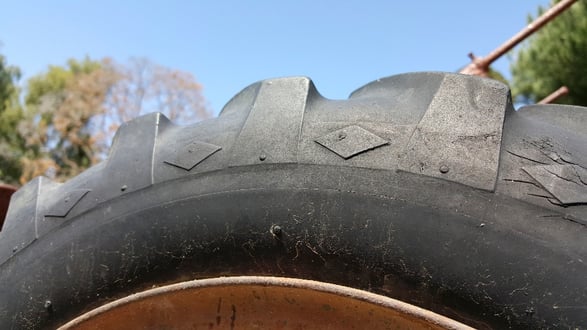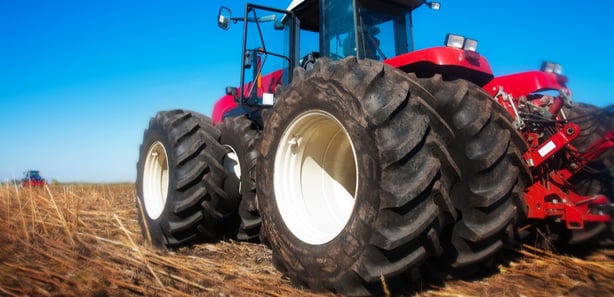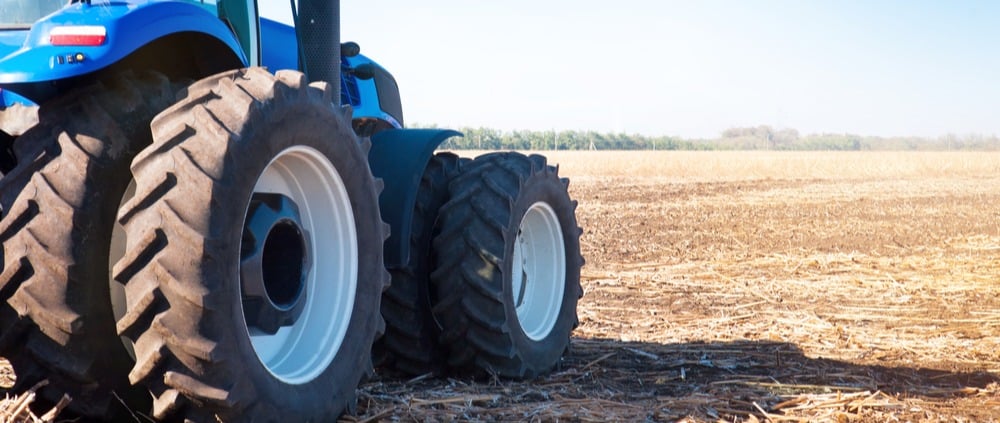When is it time to replace your tires?
When Is It Time to Replace Your Ag Tires?
Let’s talk about the major signs of wear and tear to look for when considering replacing your tires:
Noticeable Cuts or Tears
Agricultural tires are exposed to many objects or conditions that could create cuts and tears on the exterior rubber. It is important to inspect the tire sidewalls and tread area regularly and if you see any body plies or belts it is time to replace that tire.
Dry Rot
Dry rot is caused by things like overexposure to sun and dry air and contact with chemicals like herbicides and pesticides and is a concern for machines that don’t move much, especially in the summer. Dry rot steals tires of elasticity, creates cracks, degrades their structure, and ultimately makes them unusable. If you spot dry rot, you’ve spotted a tire that needs replacing.

Air Pressure
If you notice a slow leak in your tire and it’s not from the valve stem, there could be punctures in the tire. Ignoring a leaking tire could end up in the tire running under inflated which could cause damage to the tire and your crop. When the task of constantly filling a slow-leaking tire becomes unbearable and you realize the time and effort spent doing it is costing you more than a new tire, it’s time for a replacement.
Tread Depth
As the tread depth decreases below 20% of its original depth, it may start losing traction in wet soil conditions. When a tractor starts operating at a higher slip rate, it takes longer to get a job done and use more fuel.

Importance of Replacing Agriculture Tires on Time
Replacing tires is expensive, so it’s understandable to want to put off making the investment in new tires for as long as possible. However, taking too long to get new tires might cost you money in the long run.
- Excessive wheel slip caused by worn tires makes tires spin excessively, which wastes fuel and power, along with speeding up tire wear
- Worn tires that result in too much wheel slip can cause your tractor to use more fuel
- The more wheel slip from worn tires, the less productive your tractor is and the greater amount of time you spend working (time is money!)
- Older ag tires are unable to hold optimal air pressure. Underinflation puts tires at very high risk of failure from heat buildup or running flat and can also lead to poor steering/handling/braking, increased fuel consumption, and sidewall cracking from excessive flexing, all of which costs you in the long run
If you think it's time to replace your ag tires, get in touch with us today!



